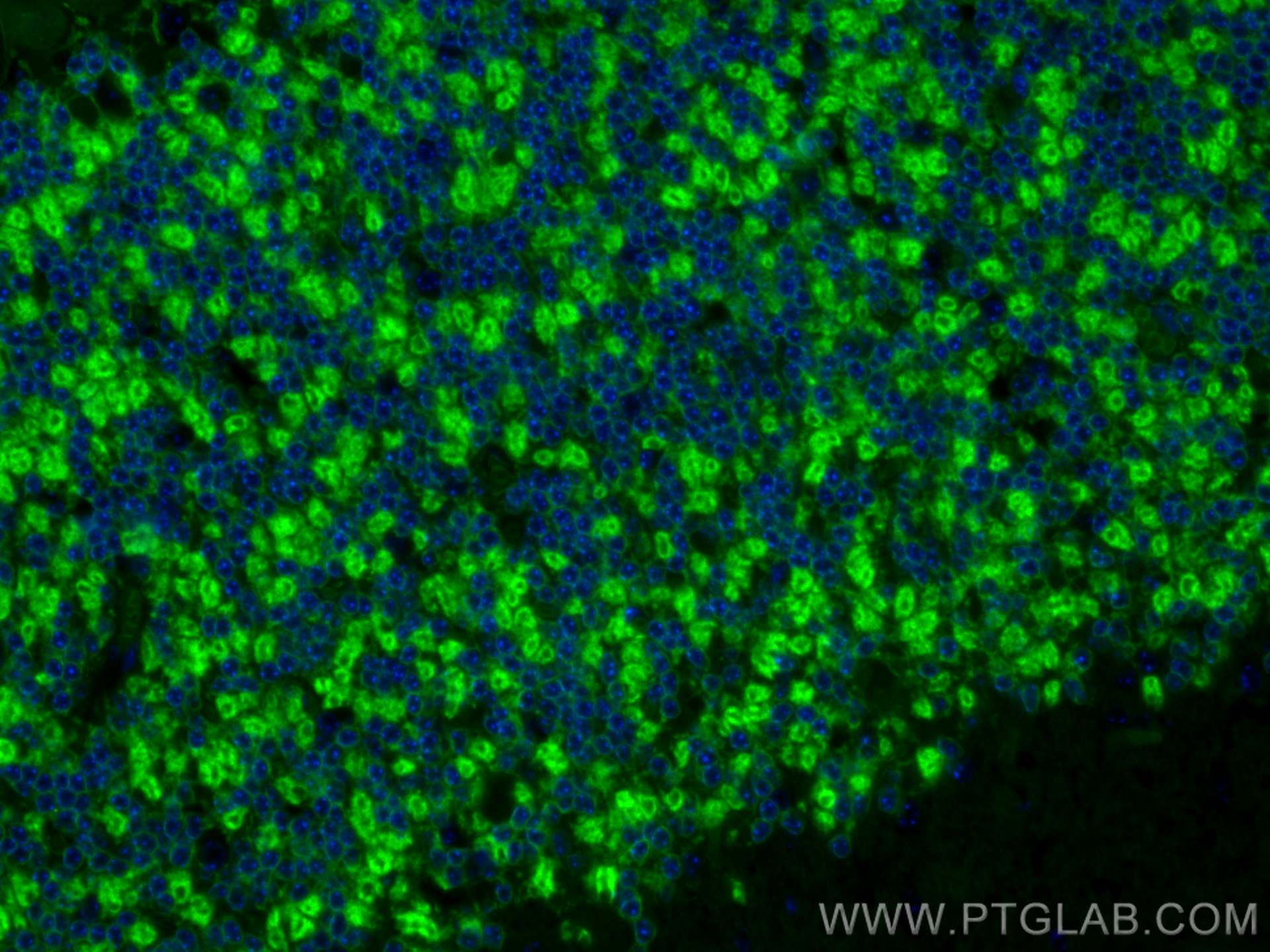Tested Applications
| Positive IF-P detected in | mouse cerebellum tissue |
Recommended dilution
| Application | Dilution |
|---|---|
| Immunofluorescence (IF)-P | IF-P : 1:50-1:500 |
| It is recommended that this reagent should be titrated in each testing system to obtain optimal results. | |
| Sample-dependent, Check data in validation data gallery. | |
Product Information
CL488-28724 targets KCC2/SLC12A5 in IF-P applications and shows reactivity with Human, Mouse, Rat samples.
| Tested Reactivity | Human, Mouse, Rat |
| Host / Isotype | Rabbit / IgG |
| Class | Polyclonal |
| Type | Antibody |
| Immunogen |
CatNo: Ag30203 Product name: Recombinant human SLC12A5 protein Source: e coli.-derived, PGEX-4T Tag: GST Domain: 915-1043 aa of BC132670 Sequence: ILKQMHLTKNEREREIQSITDESRGSIRRKNPANTRLRLNVPEETAGDSEEKPEEEVQLIHDQSAPSCPSSSPSPGEEPEGEGETDPEKVHLTWTKDKSVAEKNKGPSPVSSEGIKDFFSMKPEWENLN Predict reactive species |
| Full Name | solute carrier family 12 (potassium-chloride transporter), member 5 |
| Observed Molecular Weight | 130-150 kDa |
| GenBank Accession Number | BC132670 |
| Gene Symbol | KCC2 |
| Gene ID (NCBI) | 57468 |
| RRID | AB_3084121 |
| Conjugate | CoraLite® Plus 488 Fluorescent Dye |
| Excitation/Emission Maxima Wavelengths | 493 nm / 522 nm |
| Form | Liquid |
| Purification Method | Antigen affinity purification |
| UNIPROT ID | Q9H2X9 |
| Storage Buffer | PBS with 50% glycerol, 0.05% Proclin300, 0.5% BSA, pH 7.3. |
| Storage Conditions | Store at -20°C. Avoid exposure to light. Stable for one year after shipment. Aliquoting is unnecessary for -20oC storage. |
Background Information
KCC2, encoded by SLC12A5, is a neuron-specific K+-Cl- cotransporter that is essential for Cl- homeostasis and inhibitory synaptic transmission in brain. KCC2 is expressed at high levels in neurons throughout the nervous system. KCC2 deletion caused animal death. Alterations of KCC2 have been linked to neuropathic pain, temporal lobe epilepsy, and other diseases.
Protocols
| Product Specific Protocols | |
|---|---|
| IF protocol for CL Plus 488 KCC2/SLC12A5 antibody CL488-28724 | Download protocol |
| Standard Protocols | |
|---|---|
| Click here to view our Standard Protocols |




